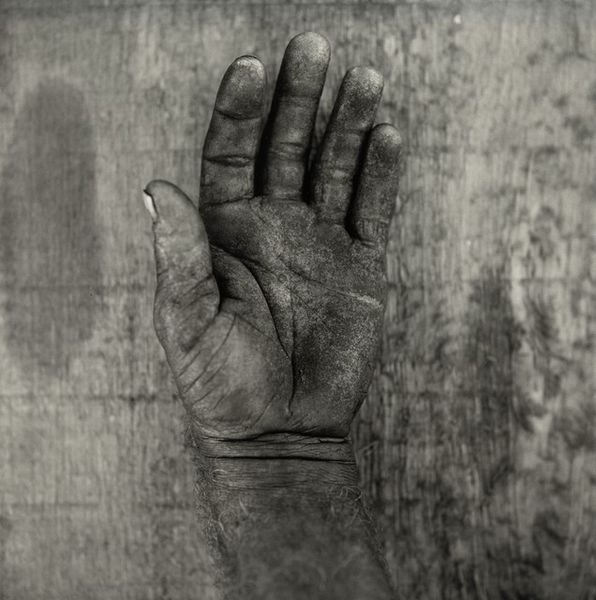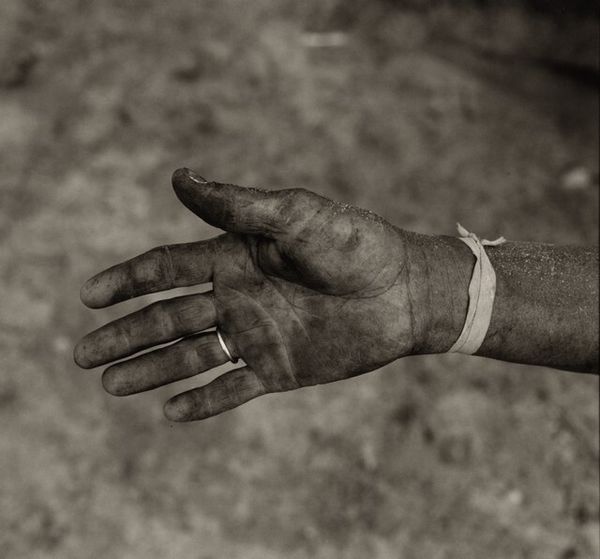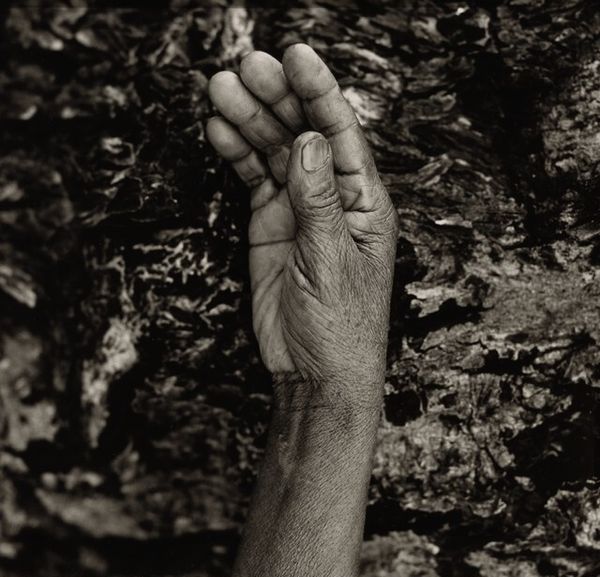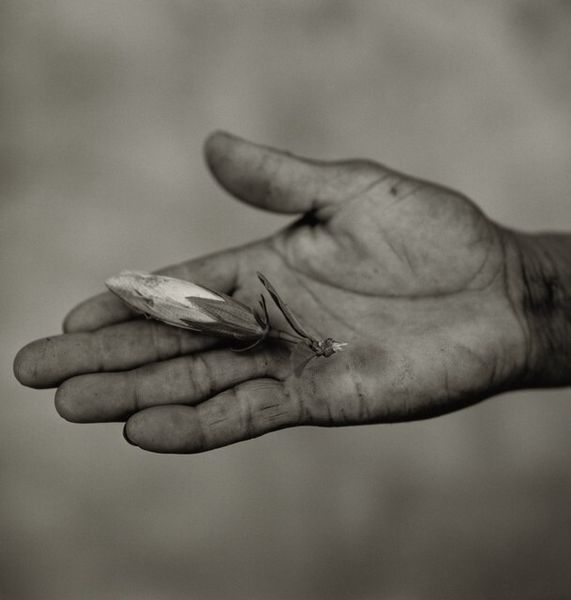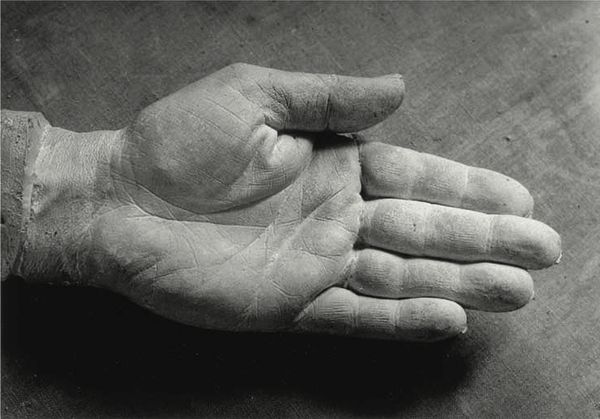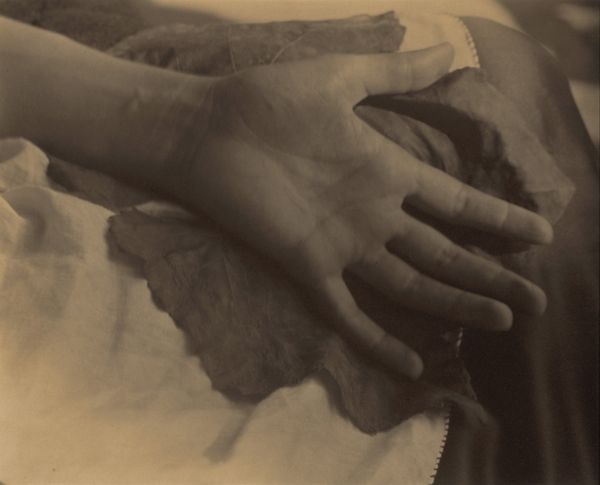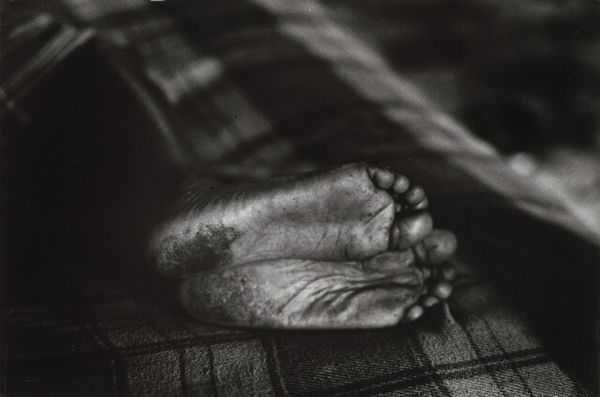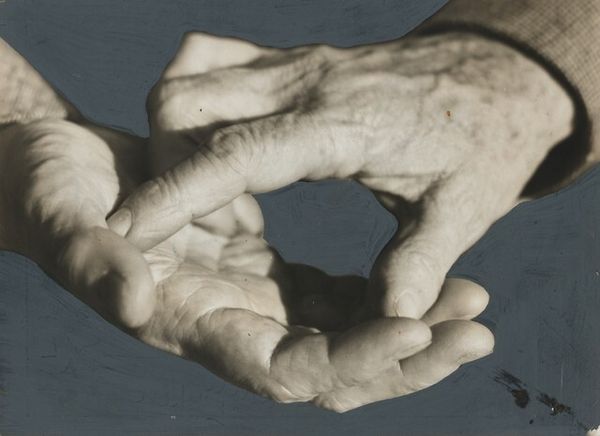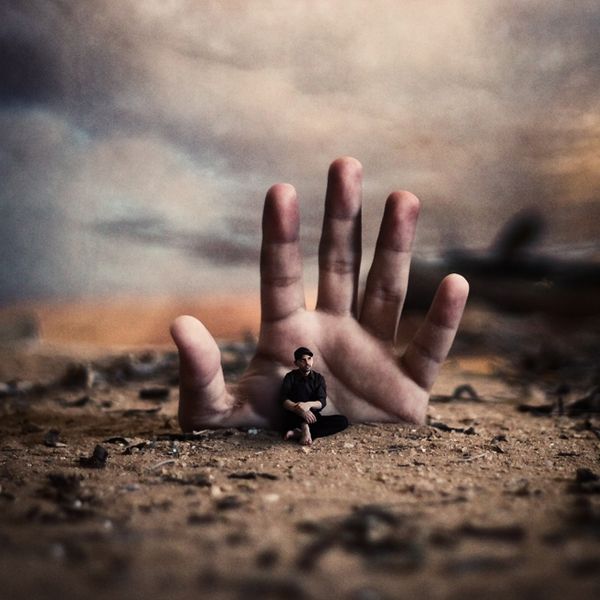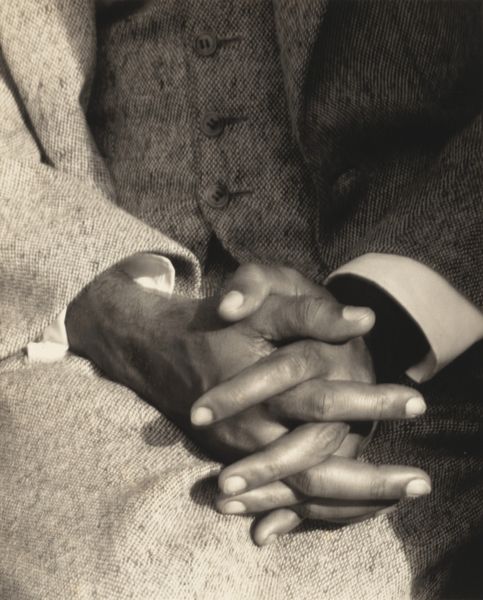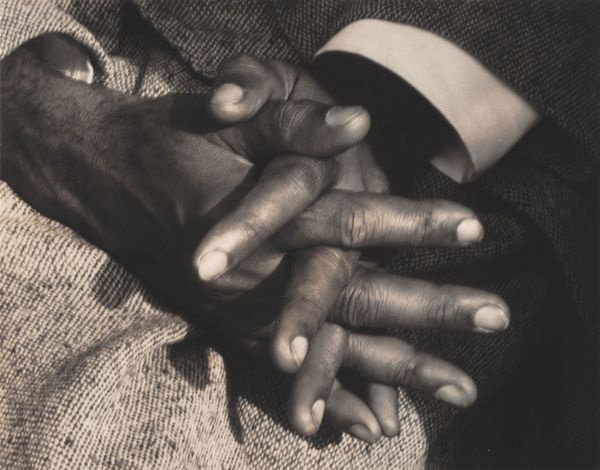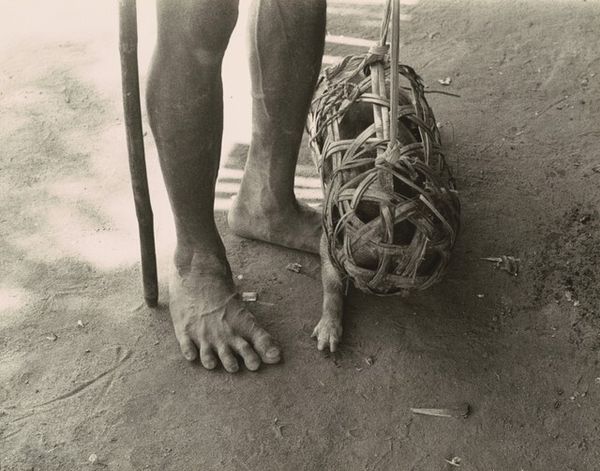
The "Hope" Grasshopper. Dona Antônia's Wish-Ribbon Bracelet. Five Centuries Work the Land at Black River. Possibly 1999 - 2001
0:00
0:00
photography, gelatin-silver-print
#
portrait
#
black and white format
#
photography
#
black and white
#
gelatin-silver-print
#
monochrome photography
#
monochrome
#
monochrome
Dimensions: image: 37.15 x 37.15 cm (14 5/8 x 14 5/8 in.) framed: 38.1 × 38.1 × 3.81 cm (15 × 15 × 1 1/2 in.)
Copyright: National Gallery of Art: CC0 1.0
Curator: Here we have a gelatin-silver print by Fazal Sheikh, potentially made between 1999 and 2001. The piece is entitled "The \"Hope\" Grasshopper. Dona Antônia's Wish-Ribbon Bracelet. Five Centuries Work the Land at Black River." Editor: It’s...strikingly raw. Just this hand, rendered in stark monochrome, emerging from or sinking into, what looks like earth. There's a real sense of labour etched into the skin itself, you know? It feels heavy. Curator: Precisely. The emphasis on the hand is quite deliberate, considering Sheikh’s broader project. He consistently focused on communities dispossessed from their land. This hand becomes symbolic of the labour extracted, the relationship to the earth, the physical connection severed. Editor: Absolutely. The textures! The lines in the palm, the dryness of the skin – it tells a story of generations of toil. And the monochromatic choice reinforces that timeless quality. It could be a hand from five centuries ago, honestly. Did the artist engage in collaborative practices when capturing this? Curator: Yes, extensively. Sheikh is known for collaborating closely with his subjects, spending considerable time to understand their stories. In this case, this work came out of a series he developed exploring themes of displacement and dispossession connected to land. He prioritized working with and representing communities impacted. This work functions almost as an anthropological record or case study, providing commentary on material conditions of Black River. Editor: I can see that collaborative aspect. It isn't just *his* vision; there's a weight of lived experience informing it, channeled through the technical process of silver gelatin printing itself. You think about the labour involved in even producing the image – the darkroom work, the chemical processes...It all contributes to this overwhelming sense of embodied history. Like that hand, that silver gelatin print carries generations of mark making on both subject and artist's side. Curator: A point well taken. Gelatin-silver printing gives that deep richness and contrast we're noticing but also the image is rendered permanent through light exposure and chemical processing. And perhaps the seemingly humble nature of the hand distracts from its complex narrative of dispossession, of survival. It's a piece that yields more with prolonged contemplation. Editor: You know, initially, it felt melancholic, maybe even a little desolate. But hearing about the community collaboration…the resilience implicit in its very existence, I find it empowering and human, really. It makes one grateful for the chance to look closely. Curator: Agreed. The work is more than a portrait; it's an invocation and memorial. A potent reminder.
Comments
No comments
Be the first to comment and join the conversation on the ultimate creative platform.
